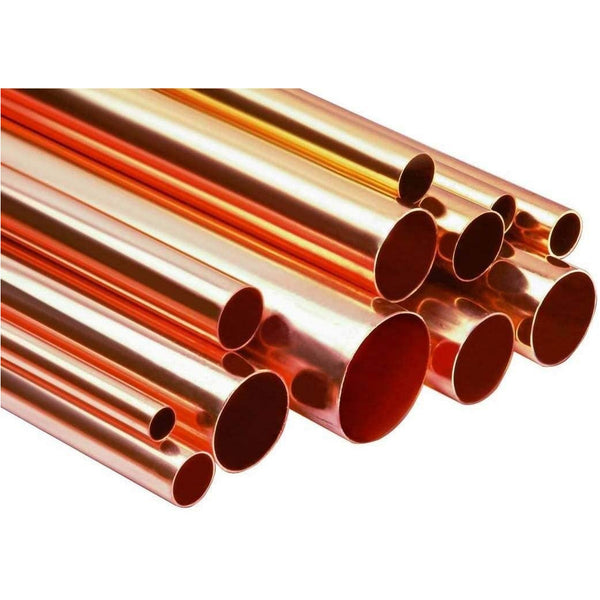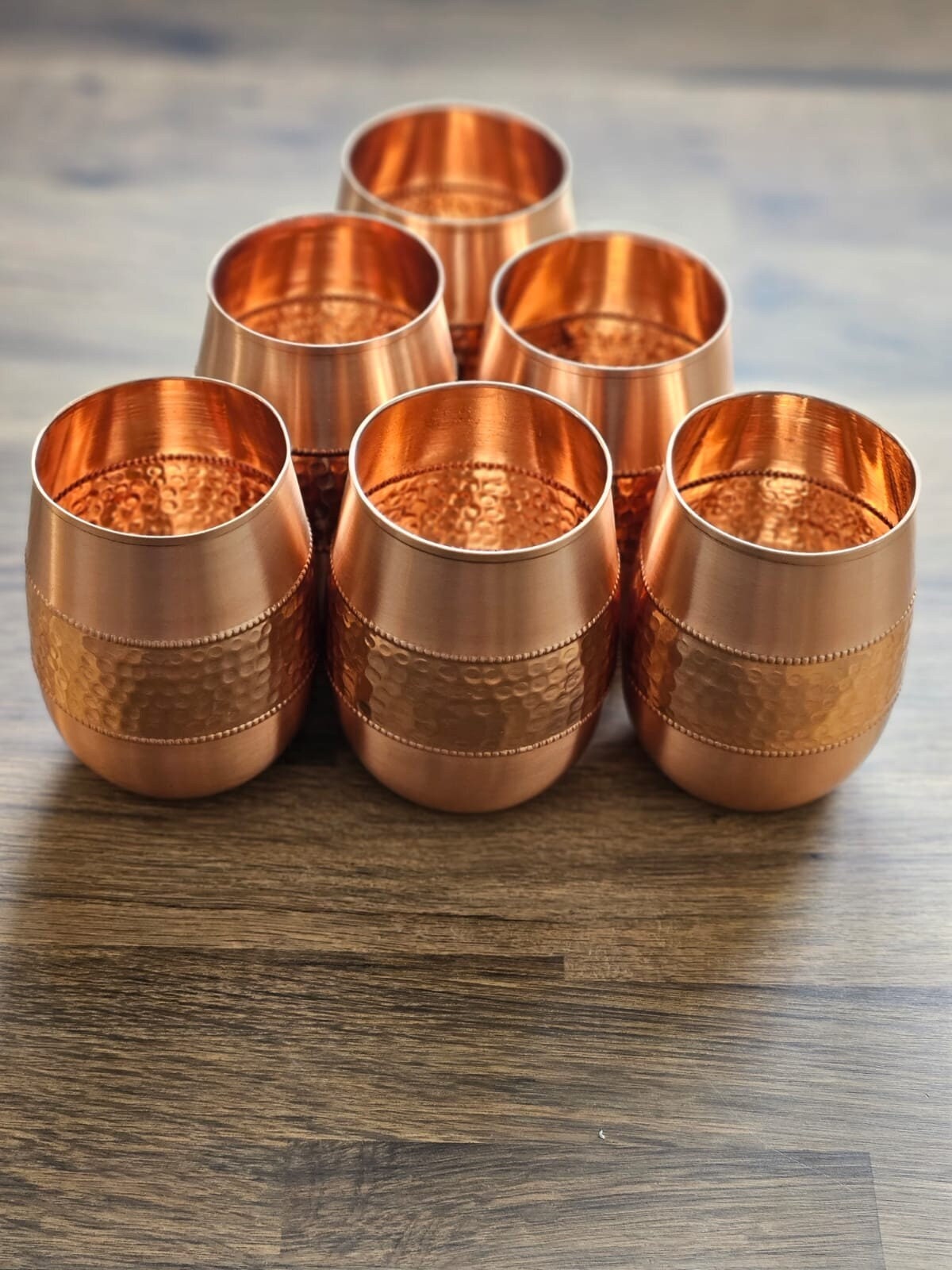Exactly How Copper Products Contribute to Lasting Practices in Numerous Sectors
Copper products are progressively acknowledged for their significant payments to lasting techniques across multiple fields, driven by their inherent residential or commercial properties such as sturdiness, recyclability, and efficiency. In eco-friendly power systems, for example, copper improves the performance of solar and wind modern technologies, while its application in building and construction decreases waste via long life. The material's antimicrobial qualities use encouraging benefits in medical care setups. As sectors seek to take on even more sustainable practices, the duty of copper might confirm critical in attaining environmental objectives. What effects might this have for future technologies in sustainability?
Copper in Renewable Resource
Copper plays a critical duty in the improvement of renewable resource technologies, functioning as a crucial conductor in different applications. Its phenomenal electric conductivity and resistance to deterioration make it an ideal material for electrical circuitry, which is necessary in solar panels, wind generators, and energy storage space systems. In solar photovoltaic or pv systems, copper is used in the affiliations and circuitry, allowing efficient energy conversion from sunshine to electrical energy.
In wind energy, copper is integral to the generators and transformers that convert kinetic power into electric energy, making certain optimal performance and reliability. The need for electric cars (EVs) is increasing, with copper being an essential element in batteries, electric motors, and billing infrastructure. The transition to EVs dramatically boosts the demand for copper, as these cars generally make use of 4 times much more copper than standard internal combustion engine lorries.
As the globe seeks to reduce environment modification and change to sustainable power resources, copper's function ends up being increasingly critical. The material not only boosts the performance and resilience of renewable resource systems but also sustains the wider objective of reducing greenhouse gas exhausts and promoting a sustainable future.
Eco-Friendly Building Products
Recently, there has been a remarkable change in the direction of the fostering of environment-friendly building and construction products in feedback to growing environmental problems. This adjustment is inspired by the requirement for lasting options that decrease ecological footprints while maintaining architectural stability and aesthetic charm.
Copper, understood for its resilience and recyclability, has emerged as a key gamer in this market. It can be used in roof, plumbing, and electric systems, adding to energy efficiency and decreasing waste. Copper's long life suggests less replacements with time, further enhancing its sustainability account.
Additionally, materials such as bamboo, recovered wood, and recycled steel are acquiring popularity. These alternatives not only supply decreased environmental effect however additionally promote source preservation. As developing codes increasingly emphasize sustainability, engineers and contractors are incorporating these products into their jobs, promoting innovation in layout.
The boosting adoption of environmentally friendly building materials shows a more comprehensive commitment to sustainability in the built environment. By focusing on these materials, the building sector can substantially lower its carbon footprint, align with regulatory standards, and sustain a healthier environment for future generations. This fad notes a crucial step in the direction of a more sustainable future in building and construction.
Copper's Function in Healthcare
Current researches have highlighted the considerable function of copper in healthcare settings, specifically due to its antimicrobial homes. Copper surface areas have been shown to reduce the presence of virus, consisting of infections and germs, by up to 99.9% within a short period. This remarkable efficiency makes copper a vital material for high-touch surface areas in healthcare facilities, such as doorknobs, bed rails, and IV posts, therefore adding to improved infection control actions.
Along with its straight antimicrobial effects, copper likewise contributes in the broader context of medical facility sustainability (Copper Products). By integrating copper right into clinical equipment and home furnishings, medical care facilities can minimize the occurrence of healthcare-associated infections (HAIs), which not only improves client results but also reduces the costs related to extensive hospital remains and extra therapies
In addition, copper's durability and recyclability straighten with sustainable see this site techniques, permitting liable source monitoring. As healthcare systems significantly focus on both person security and ecological stewardship, the assimilation of copper products is becoming extra widespread. This dual advantage emphasizes copper's important contribution to a much healthier, more secure, and extra sustainable health care environment.
Sustainability in Transportation

Moreover, copper's toughness and deterioration resistance contribute to the durability of transport facilities (Copper Products). In rail systems, for circumstances, copper components enhance the dependability and effectiveness of signaling and power systems, vital for lowering delays and energy intake. Furthermore, copper's duty in renewable energy systems, such as solar and wind, sustains sustainable transportation remedies by giving clean energy for electric transit options
Investments in copper innovation not just foster sustainability however also stimulate financial development and job production in eco-friendly markets. As markets make every effort to fulfill rigorous ecological laws, the application of copper products in transport becomes an essential approach in accomplishing sustainability goals and promoting a cleaner, much more reliable future.
Copper and Circular Economic Climate
As the globe progressively embraces sustainability, the function of copper in the circular economic situation ends up being ever much more substantial. Copper's inherent buildings-- such as its sturdiness, conductivity, and recyclability-- setting it as a crucial material in a resource-efficient economic situation. The round economic situation aims to lessen waste and make the most of source usage through recycling and reusing materials, and copper excels additional info in this respect.
The metal can be reused indefinitely without loss of quality, making it an optimal prospect for lasting practices across various sectors, consisting of building and construction, electronic devices, and sustainable power. By recuperating and reprocessing copper from end-of-life products, markets can dramatically lower the requirement for virgin materials, thereby reducing environmental effects connected with mining and handling.
Moreover, the integration of copper right into circular economic situation structures not just preserves sources however additionally fosters advancement. Organizations that prioritize copper recycling add to an extra lasting supply chain, enhancing their competitiveness while straightening with regulative needs and customer preferences for environmentally accountable products.
Verdict
In verdict, copper items significantly add to lasting techniques across multiple industries. Their vital role in boosting sustainable power modern technologies, advertising eco-friendly building products, sustaining infection control in healthcare, promoting sustainable transport, and embodying the concepts of a round economic climate emphasizes the convenience and relevance of copper. By incorporating copper into different applications, sectors can accomplish greater performance, minimize ecological effect, and align with global sustainability goals, eventually fostering a much more lasting future.

Copper's excellent conductivity makes it a preferred material in electric vehicle (EV) systems, improving power effectiveness and efficiency. Furthermore, copper's duty in eco-friendly power systems, such as solar and wind, supports sustainable transport remedies by offering clean energy for electric transit options.
Their crucial duty in boosting renewable power modern technologies, promoting green building materials, supporting infection control in healthcare, facilitating sustainable transportation, and symbolizing the principles of a round economic climate underscores the flexibility and value of copper.